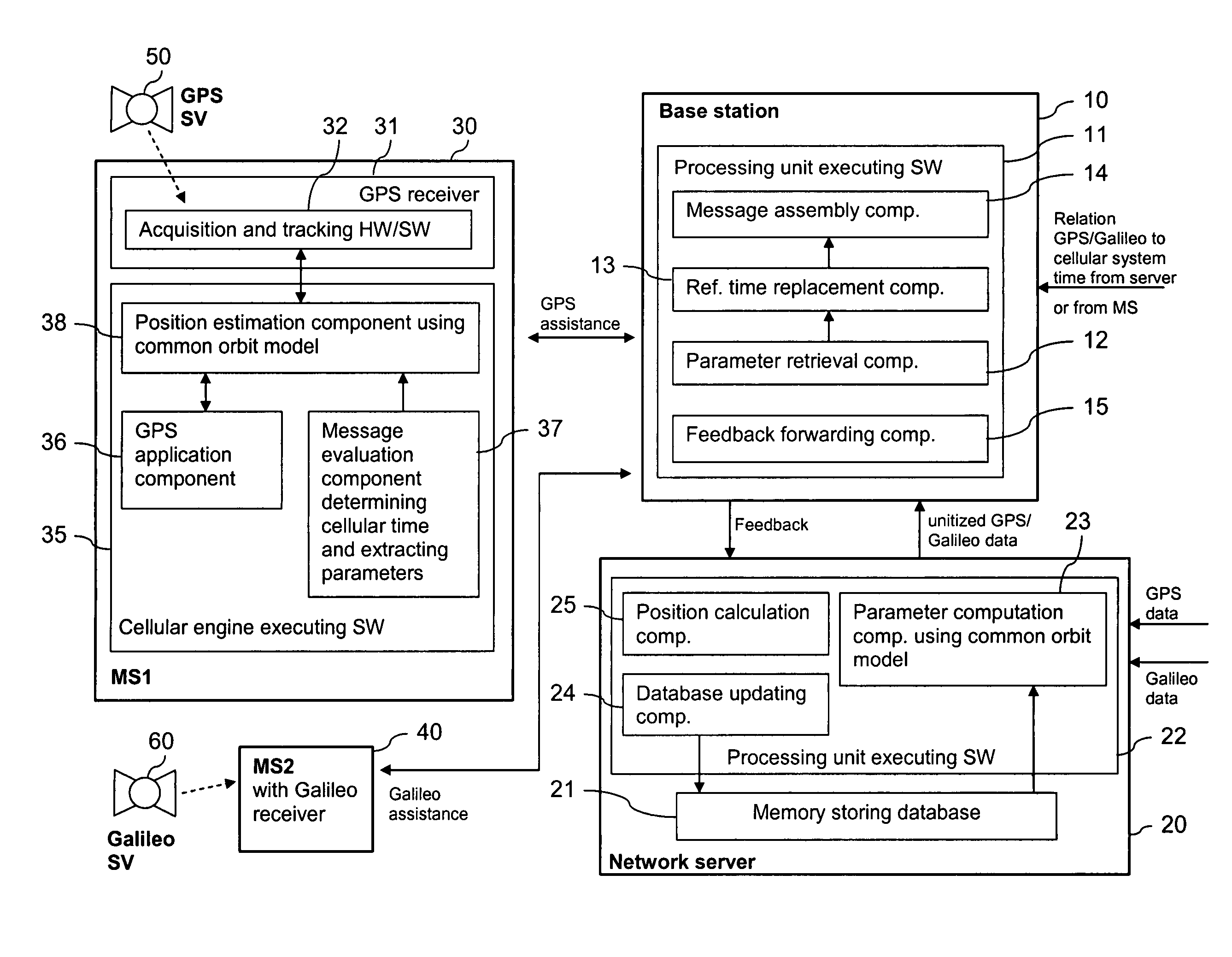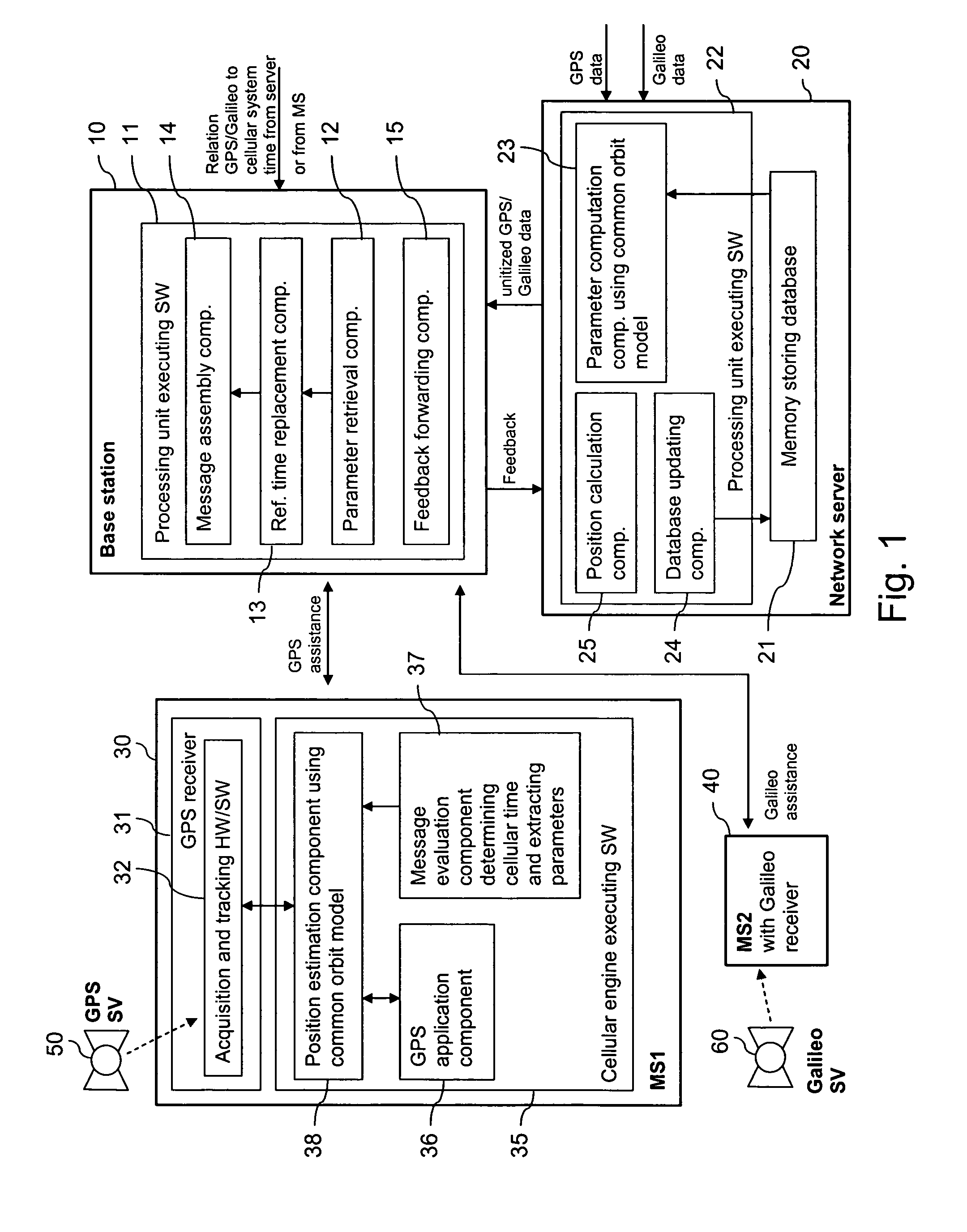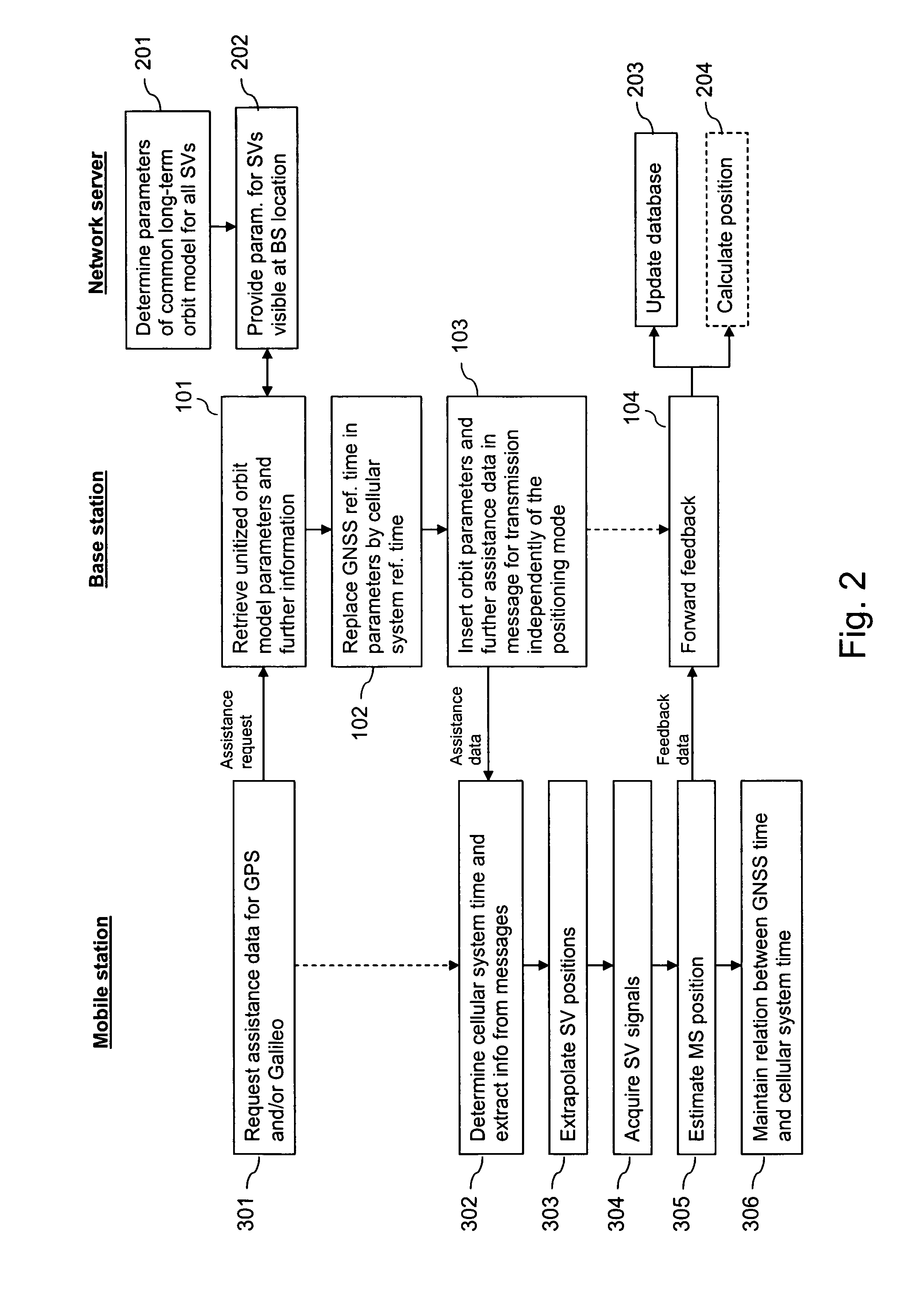Supporting an assisted satellite based positioning
a satellite and positioning technology, applied in the field of satellite positioning, can solve the problems of limiting the propagation time of the satellite signal and the occurring doppler frequency, all protocols have a high dependency on gps, and cannot be suitable for actual accurate positioning, so as to reduce the amount of data that has to be transferred between a communication network and a mobile arrangement, extend the life span of long-term orbital parameters, and enhance the accuracy and integrity of long-term orbit models.
- Summary
- Abstract
- Description
- Claims
- Application Information
AI Technical Summary
Benefits of technology
Problems solved by technology
Method used
Image
Examples
Embodiment Construction
[0092]FIG. 1 is a schematic block diagram of a system supporting A-GNSS in accordance with an embodiment of the invention. The system avoids the necessity of providing GNSS time as assistance data and unitizes the provided of assistance data.
[0093]The system comprises a base station 10 and a network server 20 of a GSM network or of any other cellular communication network. The system further comprises a first mobile station (MS1) 30, a second mobile station (MS2) 40, GPS satellites (GPS SV) 50 and Galileo satellites (GPS SV) 60.
[0094]The base station 10 provides a radio interface to mobile stations 20, 30 located in its vicinity. It comprises a processing unit 11 that is able to execute various implemented software code components, including a parameter retrieval component 12, a reference time replacement component 13, a message assembly component 14 and a feedback forwarding component 15.
[0095]The network server 20 can be accessed by various base stations 10 of the cellular communi...
PUM
 Login to View More
Login to View More Abstract
Description
Claims
Application Information
 Login to View More
Login to View More - R&D
- Intellectual Property
- Life Sciences
- Materials
- Tech Scout
- Unparalleled Data Quality
- Higher Quality Content
- 60% Fewer Hallucinations
Browse by: Latest US Patents, China's latest patents, Technical Efficacy Thesaurus, Application Domain, Technology Topic, Popular Technical Reports.
© 2025 PatSnap. All rights reserved.Legal|Privacy policy|Modern Slavery Act Transparency Statement|Sitemap|About US| Contact US: help@patsnap.com



